-
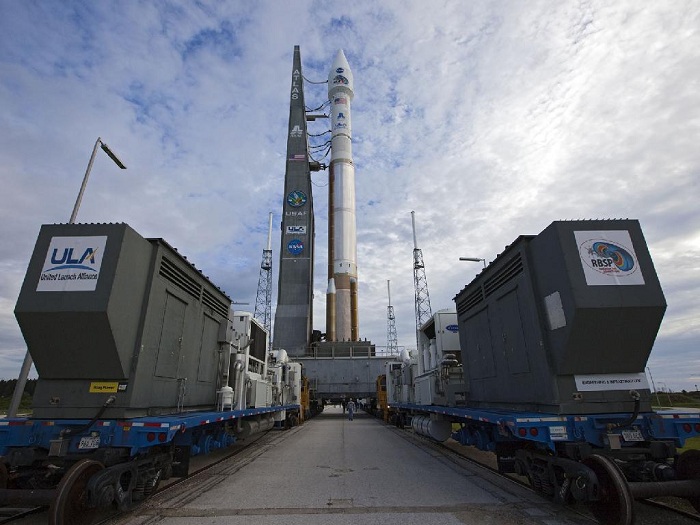
Workers help guide the United Launch Alliance with the Radiation Belt Storm Probes spacecraft aboard as it moves to the launch pad at Space Launch Complex 41 at Cape Canaveral Air Force Station in Florida.
Image credit: NASA/Kim Shiflett
Aug. 22, 2012
----------------------------------------------------------------------------------------------------------------------------------------------------------------------------------
Frams: LIVE von NASA-TV
-
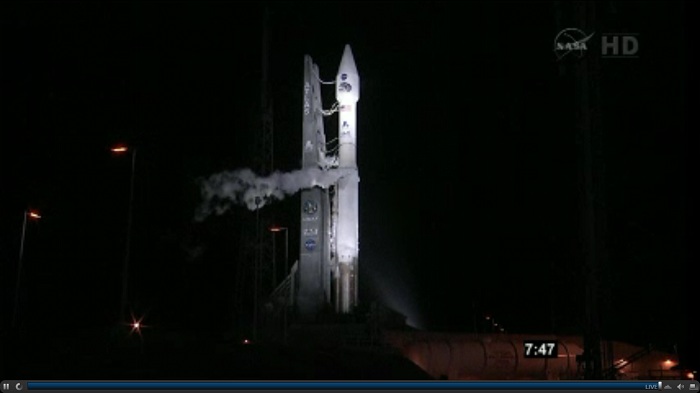
Update: 25.08.2012 / 10.30 MESZ - Start wiederum um 24 Stunden verschoben
Launch Scrubbed by Weather Violations
Sat, 25 Aug 2012 10:26:43 AM GMT+0200
Because of weather rule violations, managers have halted today's attempted launch of the Atlas V rocket carrying NASA's Radiation Belt Storm Probes. The launch team is resetting for a 24-hour recycle. Liftoff on Sunday would occur at 4:07 a.m. EDT at the start of a 20-minute launch window.
There is a 40 percent chance of acceptable weather for Sunday.
--------------------------------------------------------------------------------------------------------------------------------------------------------
Update; 25.08.2012 / 17.00 MESZ
Weather delays Atlas launch to next weekPoor weather prevented Saturday's planned launch of a pair of NASA space science satellites, and the threat of a tropical storm will keep the rocket grounded until late next week. NASA had hoped to launch the twin Radiation Belt Storm Probes (RBSP) at 4:07 am EDT (0807 GMT) Saturday, one day after a technical problem scrubbed the first launch attempt. However, stormy weather prevented the launch from taking place during a 20-minute window. NASA announced later Saturday morning that the launch would be postponed to no earlier than Thursday, August 30, because of concerns about Tropical Storm Issac, which is approaching southern Florida and likely to preclude launch attempts for several days. The Atlas 5 rocket will be rolled back to its assembly building until the storm passes. The two RBSP spacecraft will study the Van Allen radiation belts that surround the Eart
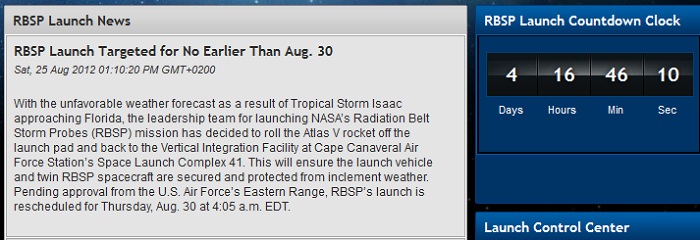
Update: 30.08.2012
A United Launch Alliance Atlas V rocket is headed toward a planned 4:05 a.m. launch Thursday morning of two NASA science probes.The chance of weather cooperating during the 20-minute launch window: 70 percent.
NASA will begin launch coverage at 1:30 a.m. Go to floridatoday.com to watch the coverage, and tune in for our live countdown blog starting at 3 a.m.
The $686 million Radiation Belt Storm Probes mission plans to study Earth's radiation belt for two years.
Thursday's will be the third launch attempt; the first last Thursday scrubbed due to a problem with the Eastern Range and the second because of poor weather. NASA then decided to wait until Tropical Storm Isaac, now officially a hurricane, passed before proceeding.
-
Update: 30.08.2012 / 20.30 MESZ
NASA's twin Radiation Belt Storm Probes are on their way into orbit following their successful liftoff aboard the United Launch Alliance Atlas V rocket. The vehicle lifted off from Cape Canaveral Air Force Station's Space Launch Complex-41 at 4:05 a.m. EDT following a remarkably smooth overnight countdown that saw good weather and no technical problems.
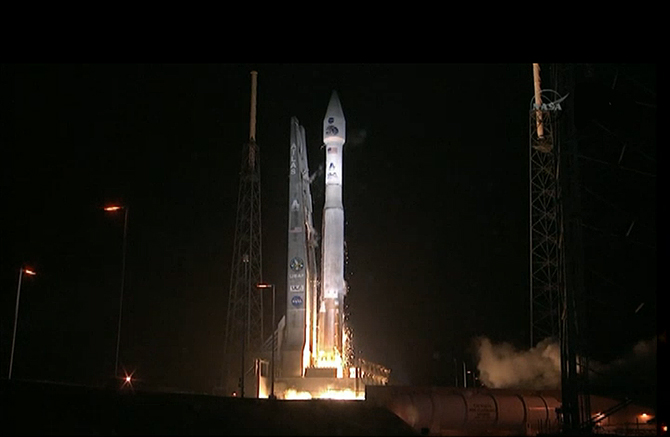
NASA's Radiation Belt Storm Probes are flying in Earth orbit after a successful liftoff and ascent this morning. The probes launched aboard a United Launch Alliance Atlas V rocket at 4:05 a.m. EDT after a smooth countdown at Cape Canaveral Air Force Station in Florida. The probes were released from the rocket's Centaur upper stage one at a time and sent off into different orbits, kicking off the two-year mission to study Earth's radiation belts.
"I'm very happy to report that we have two happy spacecraft on orbit," said Rick Fitzgerald, RBSP project manager from the John Hopkins University Applied Physics Laboratory, which is managing the mission for NASA. "Many thanks to ULA and Launch Services Program for getting us on orbit, giving us a great ride and injecting us in exactly the orbit that we wanted to be in."
During the RBSP mission, the identical twin spacecraft will fly in separate orbits throughout the inner and outer Van Allen radiation belts that encircle the Earth. The sun influences the behavior of the radiation belts, which in turn can impact life on Earth and endanger astronauts and spacecraft in orbit.
"Today, 11 years of hard work was realized by the science team as a number of us stood together watching the rocket lift off the pad," said Nicky Fox, RBSP deputy project scientist from APL. "(The spacecraft) are now at home in the Van Allen belts where they belong, and we can all finally breathe out now that solar panels are out on both of them."
The spacecraft will go through a 60-day commissioning period before beginning its prime mission.
"Now that the spacecraft are safely in orbit, the real fun begins," said Mike Luther, deputy associate administrator for the Science Mission Directorate at NASA Headquarters in Washington. "After the commissioning period, we get to then begin to perform the most detailed study of Earth's radiation belts that's ever been undertaken."
-
Frams: NASA-TV-Video von Nachtstart
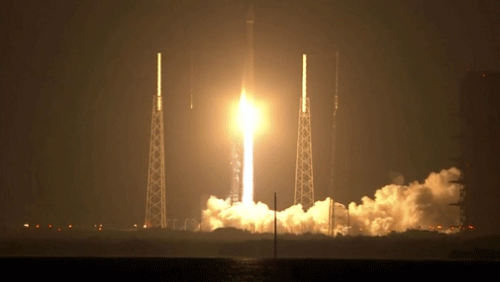
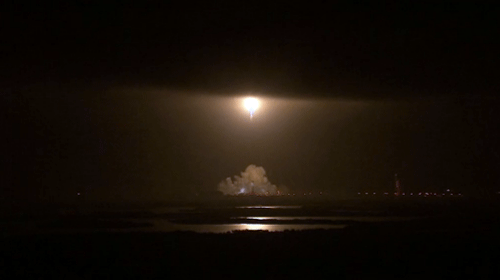
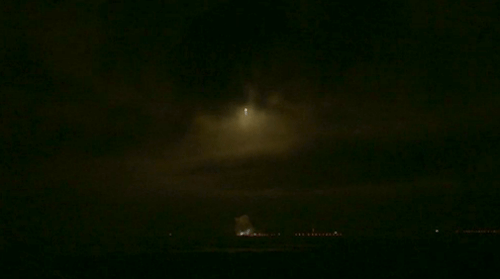
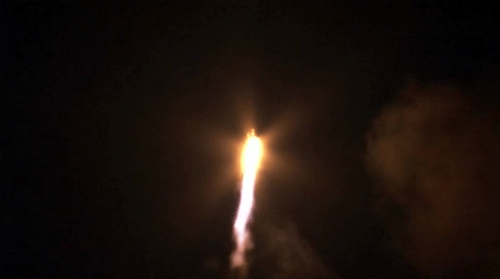
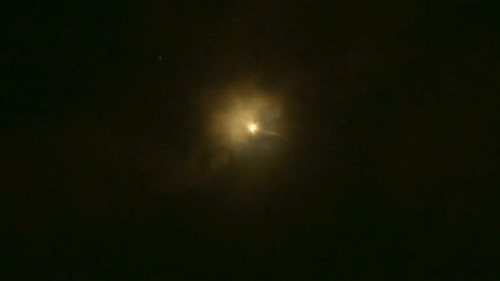
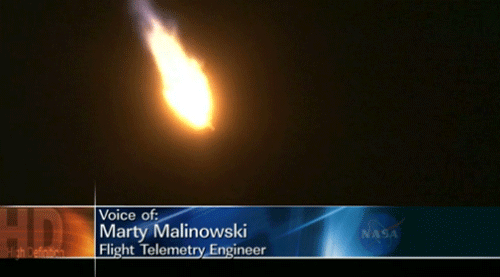
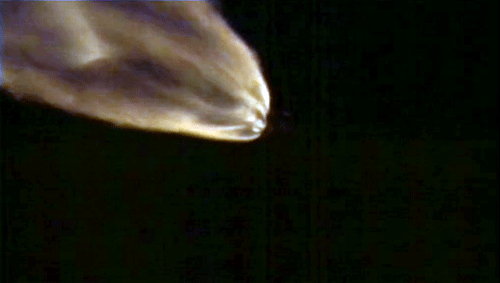
Quelle: NASA
